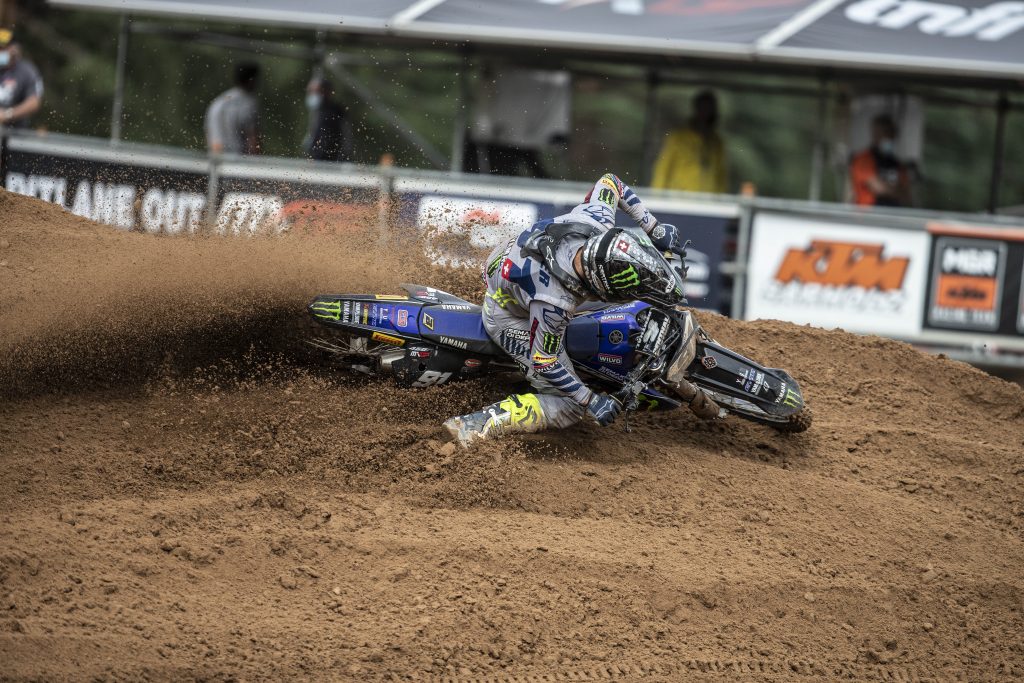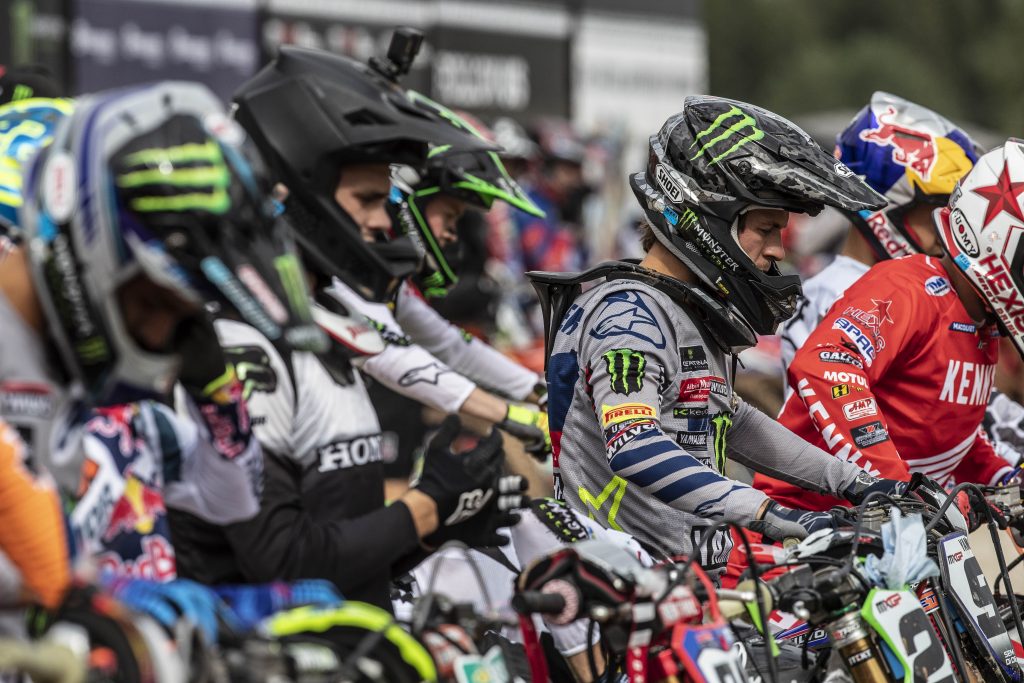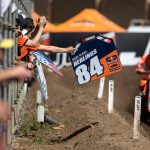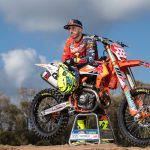MXGP is already three men down and the series hasn’t even started. The absence of Rockstar IceOne Husqvarna’s Arminas Jasikonis and HRC’s Mitch Evans for the trip to the coast of the Black Sea isn’t a great surprise considering the gravity of their respective injuries – the Lithuanian apparently making strong progress after his serious accident at Mantova last summer and the Australian still not fully fit after a badly broken wrist – but it does weaken the presence of two of the seven factory teams. GASGAS rookie Alberto Forato has a troublesome knee.
Dispiritingly, MX2 title contender Jago Geerts travels to Russia to try and acquire some points after tweaking his knee in France last weekend and the final pre-season race of a long and relatively inactive 2021 to-date. It is almost the worst-case scenario for riders and teams who have been trapped between needing to train then and limiting risk as the MXGP opener finally draws near.
After months of waiting and a stop-start period of preparation, MXGP racers will quickly have to switch-on. They won’t even have Free Practice and Qualification on Saturday to ease their way back to GP speed and intensity thanks a repeat of the 2020 one-day format. The one-dayer has been installed again for 2021 to help with the logistics of a schedule that will quick rack-up nine Grands Prix in eleven weeks.

From nothing to full-on race mode means Orlyonok could bring surprises and a wealth of mistakes and misjudgements. Understandably there will be some anxiety in the paddock. Perhaps more than usual for a ‘round one’ spectacle. What will riders be dealing with? How will they handle the resumption of competition?
I called double MXGP runner-up, Monster Energy Yamaha’s Jeremy Seewer, to ask about the likely mindset.
“It’s definitely a special one because it’s been so long. Normally you would have that feeling of ‘build-up’ coming from off-season but this time it’s been so many months, so it’s seems different,” the Swiss said of the 216-day pause, a consequence of two calendar alterations to ensure MXGP can witness public at the fences. “I think the moment you don’t have those butterflies then it’s time to stop. [that excitement] is one of the things that makes it all worthwhile.”

There have been limited opportunities to race with national series’ in the UK and France only churning into life in recent weeks so the chance to spot and observe any rivals has been slight. Thanks to motocross’ tendency to favour the fitness, application and skills of the man over any marginal advantages provided by machinery, it means the first Grand Prix raises the pressure even more because nobody really knows how competitive they will be.

“This gives mixed feelings,” Seewer claims. “If it turns out to be a positive weekend and the results are good then it’s the nicest feeling ever. But if it’s the opposite and you are struggling and not where you want to be then it can be the worst feeling in the world. It can be quite a mystery at the first GP – and even the first couple – with how you feel, how your fitness it and how it stacks up against the rest. At the end of the day, it’s the ‘big picture’ of the championship that you have to remember and the mystery fades away. We all know the names that will be there at the end, and we know the names that will have, say, only three good Grands Prix during the year.”

Victory at round one will go to the rider with the points tally closest to 50. The last three titles have been claimed with totals of 720, 782 and 933. So Orlyonok might feel like the most important and sensational fixture on the schedule but its significance is equal. You could even argue that it means more for a racer’s confidence than it does for the course of the championship. In this respect I wondered whether some ever dabble with psychology from the outset; if they are really showing their hand when they are lapping with GP rivals during training motos in Lommel or if they are purposely holding back at pre-season dates.
Seewer thinks it’s unlikely and unpractical. “I think, with the level we are at now in the sport, it is very difficult to play with something this at the pre-season races,” he opines. “At those events you might be riding at 90 or 95% but that’s just your own degree of caution. We know at the GPs is where it all counts. I don’t think you play on purpose. You don’t go to a pre-season race and say “OK, here I’m going to slow-down on purpose…” or “I’m not going to show everything here…”. That’s the nice part of motocross: you are quite transparent straight away. Otherwise, it’s clear you are not trying. You cannot be behind a gate and think “I’ll just do half a start here…”

The doubts and questions will evaporate once those shiny metal start blocks have been left behind in the gate. This is where a rider’s professionalism kicks in. Especially at a circuit like Orlyonok that can be narrow, largely one-line and where a good start is almost essential for designs on the podium. Only three athletes will be content on the flight back from Moscow on Monday. The rest will have to balance the limited fruits of a long and awkward first trip of the season.
“It’s true that you have to have a good start at this track and this adds even more pressure for the first grand prix,” Seewer concludes. “It means we will all be behind the gate thinking “I really need a start…”. The first corner will see plenty of elbows out.” This is good news for us at least, even if the Russian Grand Prix will be exciting, draining, rewarding and concerning for the guys providing the entertainment.
By Adam Wheeler @ontrackoffroad
Photos by Ray Archer @rayarcherphoto









